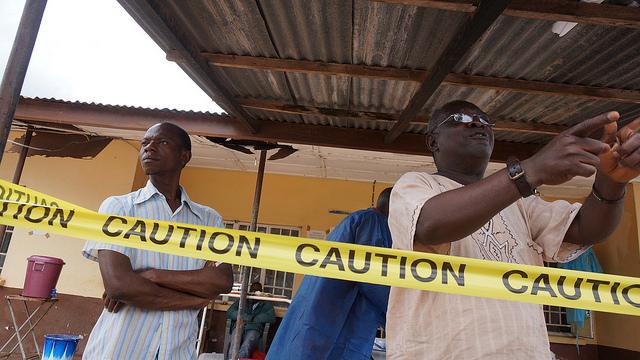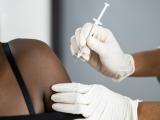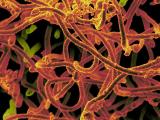The World Health Organization (WHO) today fleshed out some details of recently reported Ebola cases in Mali linked to a clinic cluster, an event that pushed the country's total from a single imported case reported a few weeks earlier to 6 illnesses, 5 of them fatal.
With the geographic reach of infections expanding in all three of the hardest-hit West African countries and porous borders in the region, global health officials have worried about the spread to other countries.
Mali was the third African country to report outbreak-related cases outside of Guinea, Liberia, and Sierra Leone. As in Nigeria, the disease in Mali has spread in a health setting, with frontline health workers among the early victims.
Clinic cluster triggers aggressive contact tracing
Mali's first Ebola patient was a 2-year-old girl who got sick after entering the country from Guinea and died from the disease on Oct 24. In its statement today the WHO said all 118 of the girl’s contacts, including family members, are past the 21-day incubation period without having symptoms.
The WHO said the disease was almost certainly imported again when a 70-year-old Grand Imam from Guinea was admitted to Bamako's Pasteur Clinic on Oct 25 and died 2 days later. Though no samples were available for testing, his illness has been reclassified as one of Guinea’s cases, because his symptoms began there.
All five cases in the clinic cluster have links to the man—three directly and two indirectly. The directly linked infections are in two health workers, a 25-year-old male nurse who died on Nov 11, a doctor who became ill on Nov 5 and is hospitalized, and a 51-year-old friend of the Imam who visited him at the clinic and died on Nov 10 without a diagnosis. His illness is recorded as Mali’s single probable case.
The indirectly linked infections are in a 57-year-old woman and her son. The woman had contact with the Imam's sick friend. She became ill on Oct 29 and died on Nov 12. Her son visited another clinic on Nov 5 and died at home on Nov 14. The WHO said Ebola infections were lab-confirmed for both cases.
A massive contact tracing effort is under way to identify any more chains of transmission and to curb the spread of the virus, the WHO said. So far workers have identified 338 contacts, include 303 who are under daily monitoring. The largest group of contacts were linked to the nurse; of 98 people identified, 75 are family members.
Mali's health ministry has beefed up contact tracing teams with polio surveillance workers, medical students, and 10 epidemiologists deployed by the WHO.
The WHO and Mali officials have said the risk of more imported cases in the country is high, given ongoing transmission across the border. It added that health officials have investigated the Imam's burial in his native village in Kouremale, Guinea, where thousands of mourners may have attended the funeral, with some having touched the body as part of the traditional custom. About 300 contacts in the village are being traced.
Clinical and PPE details on Spain’s Ebola case
Spanish doctors yesterday described the country's first locally transmitted Ebola case-patient, a nursing assistant who got sick after caring for a priest who was airlifted out of the outbreak region and later died from his infection.
The team described the 44-year-old woman’s infection letter to the New England Journal of Medicine, which provided some details about the personal protective equipment (PPE) she wore while caring for the priest.
The nursing assistant had cared for the man once on Sep 24, and on the following day after he died she helped with his burial. The authors reported that while caring for the man the nursing assistant wore a surgical mask, a FFP3 respirator designed to filter airborne particles, a double layer of gloves, a disposable gown, waterproof long-sleeved clothing that covered her feet, and waterproof footwear, hood, face mask, and goggles.
During her first contact with the man, she helped with the removal of clothes and absorbent pads. Her assistance with burial of the body also involved removing infected material. The authors said all of the measures were consistent with Spanish health ministry protocols, and no breaches of protocol were reported.
Her symptoms began on Sep 30 with malaise and a low-grade fever that remained below 100.4°F for 3 days, then increased to that point in the following 3 days.
On Oct 6 her symptoms worsened, with increased weakness, nausea, a mild cough, and a macropapular rash on her arms and trunk. She sought care at an emergency department and reported that she had cared for an Ebola patient.
After she was isolated and admitted, she started having diarrhea, a slightly productive cough, progression of the rash, and hypotension, though her body temperature was below 100.4°F.
When her initial test came back positive for Ebola, she was transferred to a specialty unit, where her condition continued to deteriorate, including fever, hypotension, continuing diarrhea, and a productive cough.
She recovered from her infection and was discharged from the hospital on Nov 5. The authors said eight health workers who had contact with the woman have passed the 21-day incubation period and no other Ebola infections have been reported in Spain.
They said her case shows that symptoms can evolve in patients who have low-grade fever.
Other developments
- US Centers for Disease Control and Prevention (CDC) Director Tom Frieden, MD, MPH, told a Senate hearing yesterday that the government's worst-case scenario projections in West Africa's Ebola outbreak won't happen, the Associated Press (AP) reported. The CDC made its projection in August, before the global surge response had traction. It said at that time that, without interventions, Sierra Leone and Liberia could reach about 500,000 cases or 1.4 million reported and unreported cases. He told the Senate homeland security and governmental affairs committee, which heard testimony on preparedness for public health threats, that he was confident at the time of the projection that high end of the prediction wouldn't occur. Though he didn't provide new estimates, he told legislators that 1,000 to 2,000 new Ebola cases are occurring in Africa each week, which seems to fit the CDC's best-case projection by the middle of January for the outbreak.
- Semen can be a source of Ebola virus disease in men who have recovered from their infections, but it's not clear what advice is being given to men who are discharged from treatment before their convalescent period has ended, which some groups say is up to 7 weeks, Australian scientists wrote yesterday in Lancet Infectious Diseases. They also noted that US Army researchers suggest a 3-month period. They cited four studies that involved a total of 11 patients, which found live virus in samples from two and viral RNA in three after various disease onsets. The researchers said men recovering from Ebola need to know how to minimize semen-related infection. The report was released just a day after India announced that it had quarantined man who had recovered from an Ebola infection in Liberia after traces of the virus were found in his semen.
- The Food and Drug Administration (FDA) said yesterday that it has issued three more warning letters to companies claiming to prevent, treat, or cure Ebola infections: Ebola-C, Inc., Bodyhealth.com LLC, and LifeSilver. The FDA said there are no approved vaccines, prescriptions, or over-the-counter drugs to prevent or treat Ebola and that the companies must take actions to remove or correct the claims or face further action. The agency said it would take swift action against companies making false Ebola claims for their products and on Sep 24 sent warning letters to three other companies.
See also:
Nov 20 WHO statement
Nov 19 N Engl J Med letter
Nov 19 AP story
Nov 19 Lancet Infect Dis report
Nov 19 FDA update
















